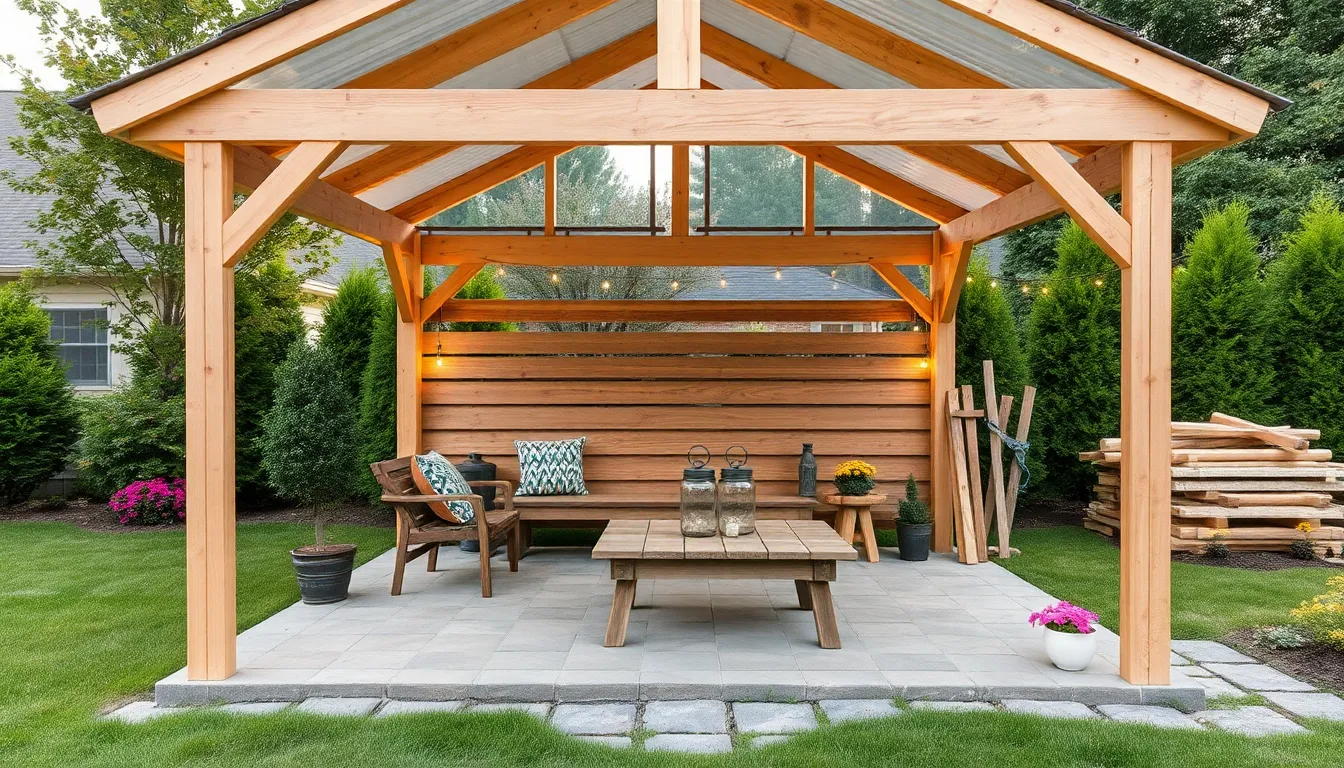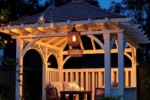Creating a cozy, inviting gazebo doesn’t have to break the bank or require advanced skills. Whether you’re new to outdoor projects or a seasoned homeowner looking for fresh ideas, this guide will help you design and build a charming shelter that enhances your yard without overwhelming your budget.
Inside, you’ll find straightforward plans, smart material choices, and handy tips that make the process manageable and enjoyable. By the end, you’ll feel confident transforming your outdoor space into a relaxing retreat that suits your style and wallet perfectly.
Choosing Affordable Gazebo Materials
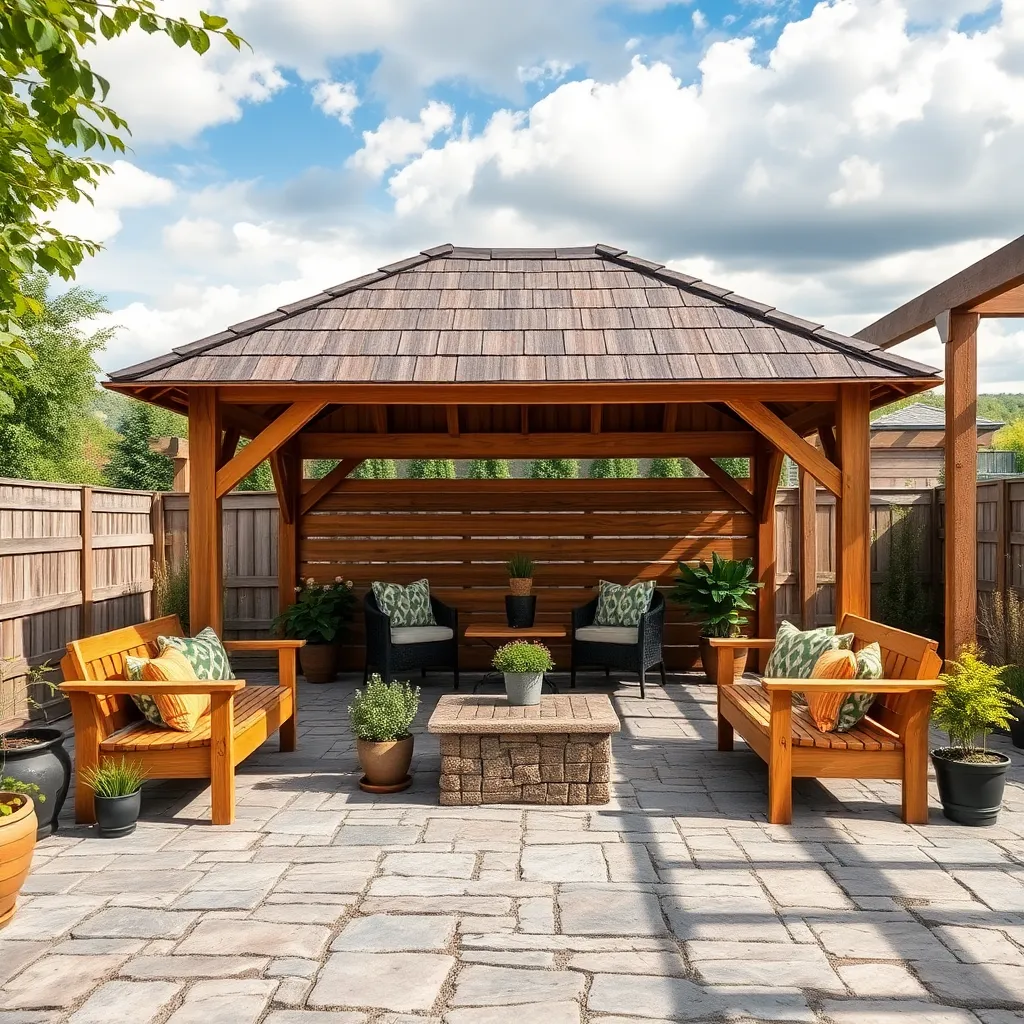
When choosing affordable gazebo materials, start with pressure-treated lumber, which offers durability against weather while remaining budget-friendly. For a simple yet sturdy frame, 2×4 or 2×6 boards provide excellent support without breaking the bank. Consider using corrugated metal or polycarbonate sheets for roofing to keep costs low and allow natural light inside, enhancing your outdoor space.
To save further, opt for pre-cut kits or reclaimed wood if you’re comfortable with a bit of DIY work—these options reduce waste and expense. For advanced builders, incorporating metal brackets and galvanized screws ensures a long-lasting structure with minimal maintenance. Remember to plan for dimensions around 10×10 feet, a manageable size that balances space and affordability perfectly.
Essential Tools for Beginners
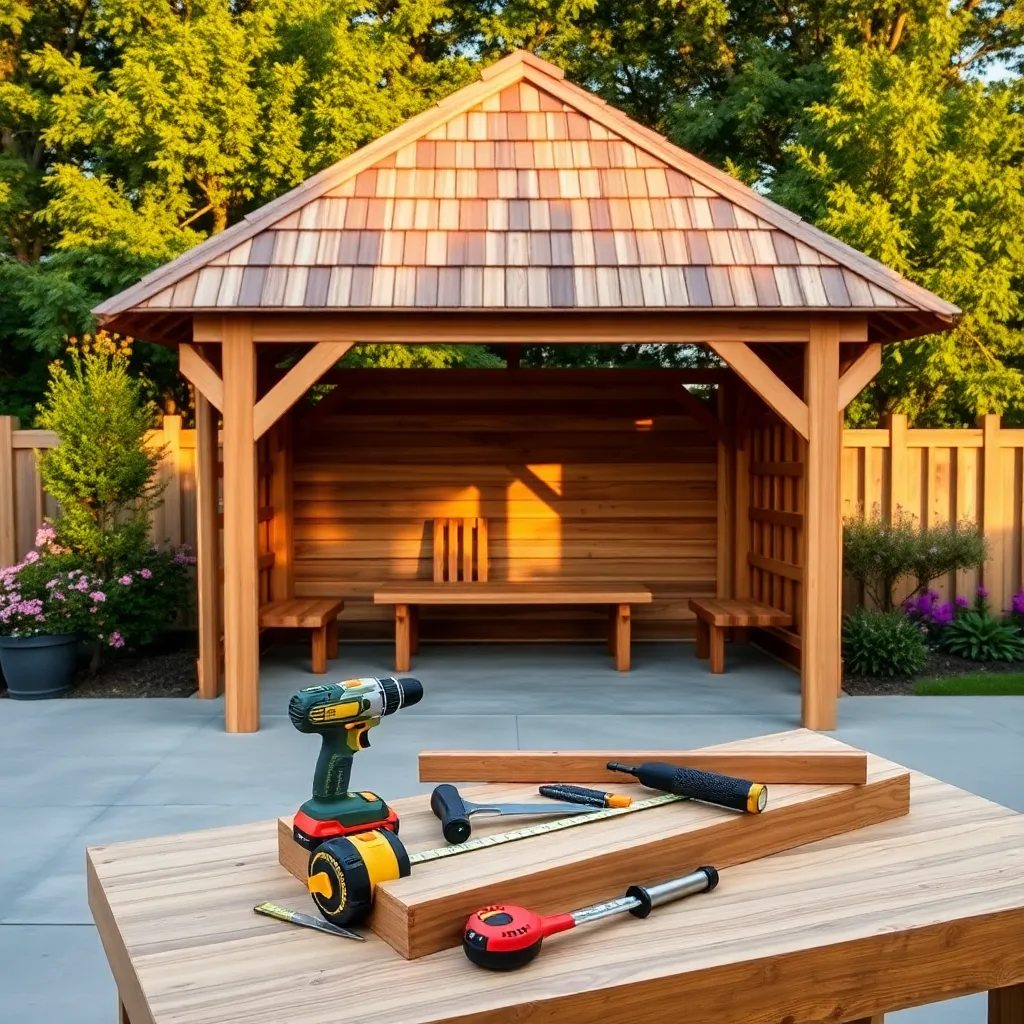
Starting your budget-friendly gazebo project requires a few essential tools that make construction straightforward and efficient. A cordless drill with various drill bits, a carpenter’s level, and a tape measure are must-haves for accurate measurements and secure assembly. Investing in a quality circular saw or handsaw will also help you cut wood to precise dimensions, especially when working with common gazebo framing materials like pressure-treated lumber or cedar.
Beyond the basics, consider adding a framing square and a stud finder to your toolkit to ensure your gazebo’s structure is perfectly aligned and safe. When selecting fasteners, opt for galvanized or stainless steel screws and nails to prevent rust and increase durability outdoors. For advanced tips, use exterior-grade wood glue alongside screws to strengthen joints, and always double-check your measurements before cutting to minimize waste and stay within budget.
Step-by-Step Gazebo Assembly
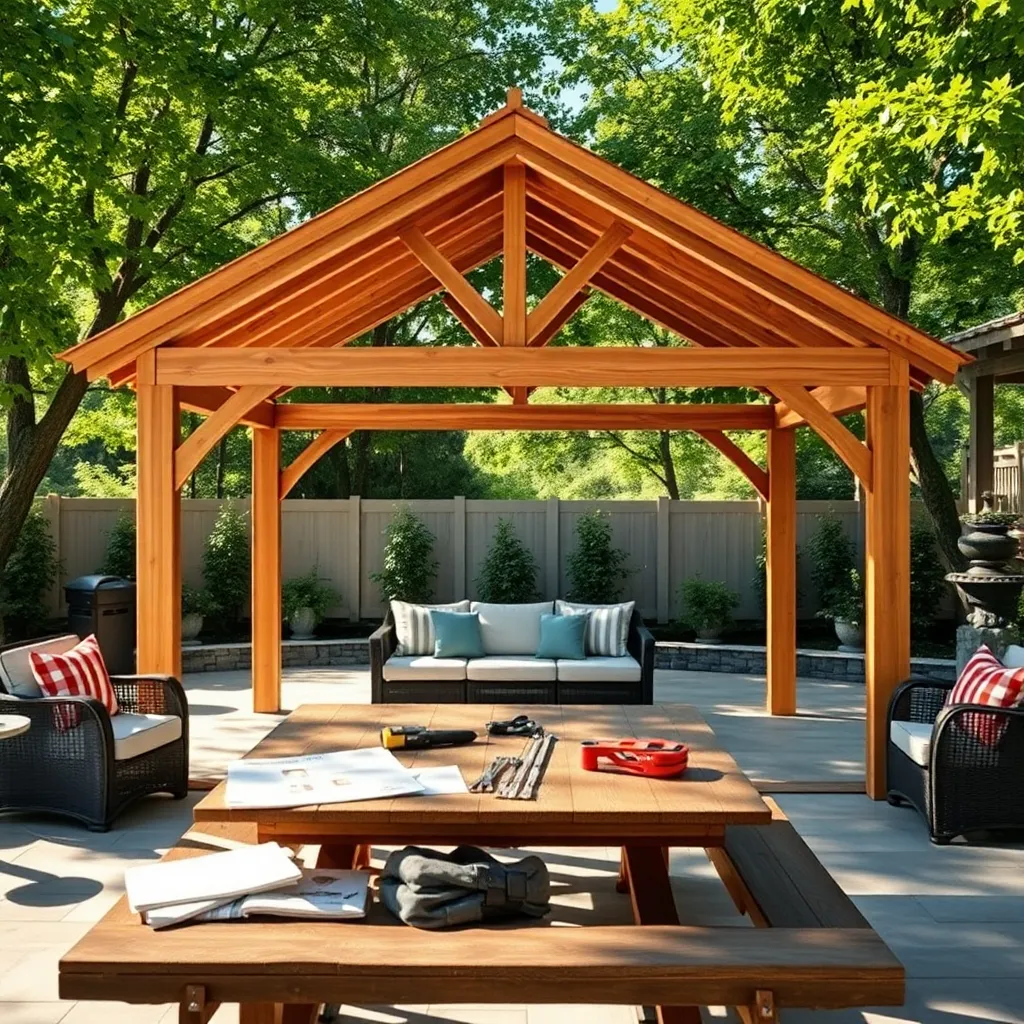
Begin your gazebo assembly by selecting a level site and preparing a sturdy foundation using concrete footings or compacted gravel. Next, assemble the frame using weather-resistant materials like pressure-treated wood or powder-coated steel to ensure durability. Follow the manufacturer’s instructions closely, starting with the base and securing posts firmly before attaching the roof supports for stability.
Once the frame is secure, add design features such as decorative trim or lattice panels to enhance both appearance and ventilation. For advanced stability, consider installing metal brackets at key joints and use galvanized screws to resist rust. Don’t forget to measure carefully during each step to maintain proper dimensions, typically a 10×10 or 12×12 foot footprint works well for most backyard spaces.
Cost-Saving Design Tips
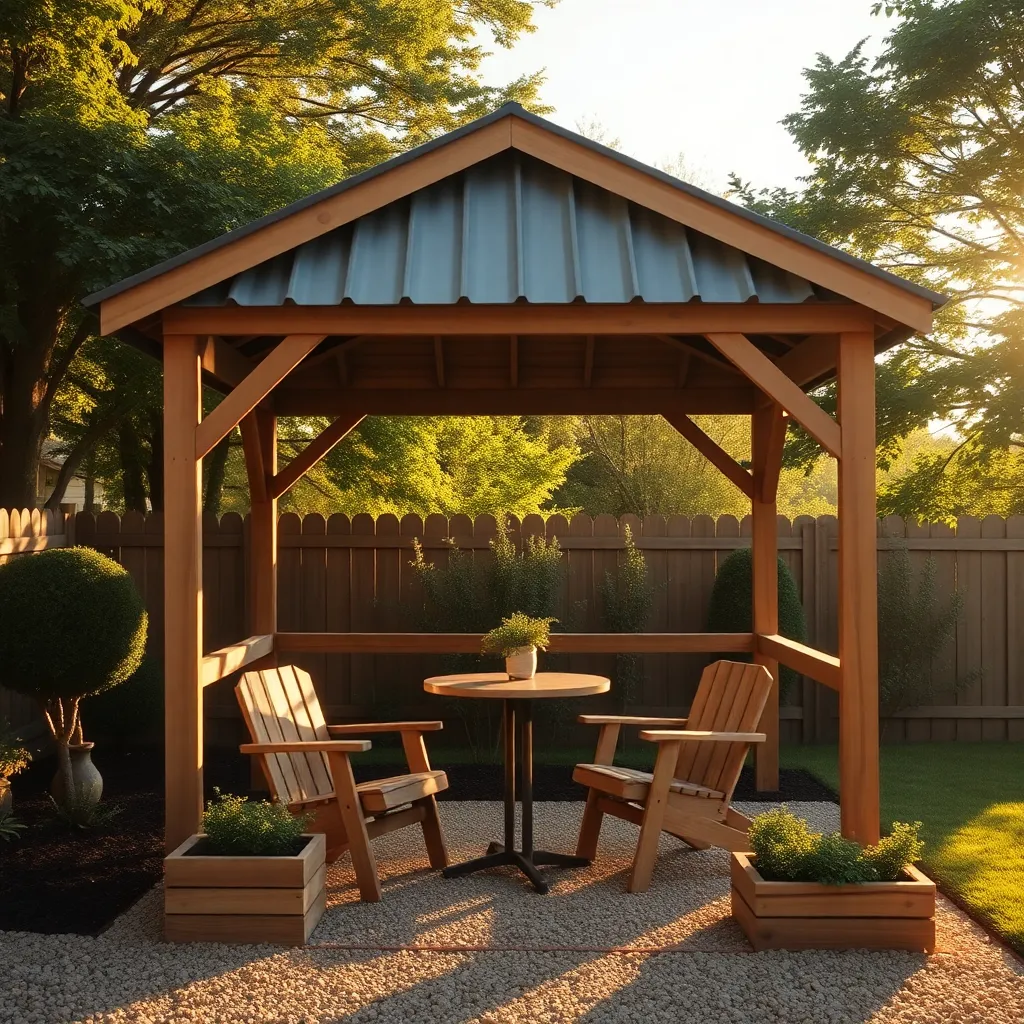
One of the easiest ways to save money on your gazebo project is by choosing cost-effective materials like pressure-treated lumber or cedar, which offer good durability without a high price tag. Additionally, consider a simple, open-sided design with a basic roof structure, as this reduces both material needs and labor time, making assembly quicker and less costly.
For those ready to optimize further, reuse salvaged wood or repurpose decking boards to cut down on expenses while adding unique character. Also, keep your gazebo dimensions modest—around 10×10 feet is a practical size for most yards and keeps material costs manageable without sacrificing functionality.
Maintaining Your Budget Gazebo

To maintain your budget gazebo effectively, start by choosing weather-resistant materials like pressure-treated wood or vinyl that require minimal upkeep. Regularly inspect joints and fasteners for any loosening, tightening bolts as needed to preserve structural stability without costly repairs. Applying a fresh coat of water-repellent sealant annually will protect your gazebo from moisture damage and extend its lifespan.
For added durability, consider installing removable or roll-up side panels made from UV-resistant fabric, which provide versatile shade and shelter while allowing easy cleaning and replacement. Advanced builders can enhance ventilation by integrating small roof vents or lattice panels, helping to reduce heat buildup during warm months. These practical upgrades keep your budget gazebo both functional and inviting throughout the seasons.
Conclusion: Creating Beautiful Outdoor Spaces
Building a budget-friendly gazebo is more than just a DIY project—it’s an opportunity to strengthen your connection through teamwork, communication, creativity, patience, and shared accomplishment. By collaborating on design choices, openly discussing ideas, finding creative solutions on a budget, practicing patience through each step, and celebrating your joint success, you’re nurturing the foundation of a resilient relationship.
Ready to get started? Gather your partner, pick a simple design from this guide, and set aside a weekend to begin your gazebo project together. Remember, the small moments spent building side by side can create lasting memories and deepen your bond.
Don’t forget to save or bookmark this article so you can revisit these tips whenever you need inspiration or guidance. With each project you tackle together, you’re not just creating beautiful spaces—you’re building a stronger, more connected future. Embrace the journey and watch your relationship flourish, one thoughtful step at a time.

